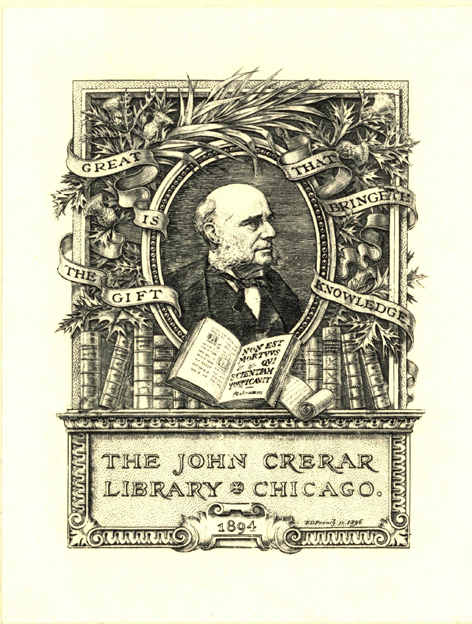Mitochondria and oxidative stress in neurodegenerative disorders /
Saved in:
| Imprint: | Boston : Blackwell, 2008. |
|---|---|
| Description: | xii, 414 p. : ill. ; 26 cm. |
| Language: | English |
| Series: | Annals of the New York Academy of Sciences ; vol. 1147 |
| Subject: | |
| Format: | E-Resource Print Book |
| URL for this record: | http://pi.lib.uchicago.edu/1001/cat/bib/7481412 |
Table of Contents:
- Preface
- Part I. Mitochondrial Genetics and Neurodegenerative Diseases
- A Mitochondrial Etiology of Neurodegenerative Diseases: Evidence from Parkinson's Disease
- Mitochondrial DNA Mutations in Disease, Aging, and Neurodegeneration
- What Have PINK1 and HtrA2 Genes Told Us about the Role of Mitochondria in Parkinson's Disease?
- Part II. Oxidant Actions and Production in Cells
- The Role of Mitochondria in Reactive Oxygen Species Metabolism and Signaling
- Oxidative Stress and Energy Crises in Neuronal Dysfunction
- The Nrf2-ARE Pathway: An Indicators and Modulator of Oxidative Stress in Neurodegeneration
- Part III. Evidence for Oxidant Damage in Brains
- Evidence of Oxidative Stress in Alzheimer's Disease Brain and Antioxidant Therapy: Lights and Shadows
- Evidence of Oxidant Damage in Huntington's Disease: Translational Strategies Using Antioxidants
- Oxidative Stress in Parkinson's Disease: A Mechanism of Pathogenic and Therapeutic Significance
- Part IV. Antioxidant Treatments
- Mitochondria-Targeted Antioxidants in the Treatment of Disease
- Development of Mitochondria-targeted Aromatic-cationic Peptides for Neurodegenerative Diseases
- A New Approach to Treating Alzheimer's Disease
- Part V. Mitochondria in Different Cell Types
- Postischemic Oxidative Stress Promotes Mitochondrial Metabolic Failure in Neurons and Astrocytes
- Imaging Brain Activation: Simple Pictures of Complex Biology
- Structural Diversity of Mitochondria: Functional Implications
- Part VI. Mitochondrial Function in Neurodegenerative Diseases
- Brain Glucose Hypometabolism and Oxidative Stress in Preclinical Alzheimer's Disease
- Complexity and Heterogeneity: What Drives the Ever-changing Brain in Huntington's Disease?
- Multinuclear Magnetic Resonance Spectroscopy for in Vivo Assessment of Mitochondrial Dysfunction in Parkinson's Disease
- Oxidant-induced Changes in Mitochondrial and Calcium Dynamics in the Pathophysiology of Alzheimer's Disease
- Part VII. Cross Talk among Mitochondria, Other Cellular Organelles, and the Cytosol
- Mitochondrial and Nuclear Cross Talk in Cell Death: Parthanatos
- Role of the Ubiquitin Conjugation System in the Maintenance of Mitochondrial Homeostasis
- Developmental Restructuring of the Creatine Kinase System Integrates Mitochondrial Engergetics with Stem Cell Cardiogenesis
- The Mitochondrial Antioxidants MitoE[subscript 2] and MitoQ[subscript 10] Increase Mitochondrial Ca[superscript 2+] Load upon Cell Stimulation by Inhibiting Ca[superscript 2+] Efflux from the Organelle
- Preventing NAD[superscript +] Depletion Protects Neurons against Excitotoxicity: Bioenergetic Effects of Mild Mitochondrial Uncoupling and Caloric Restriction
- Part VIII. Changes in Mitochondria Important for Neurodegenerative Processes
- Impairing the Mitochondrial Fission and Fusion Balance: A New Mechanism of Neurodegeneration
- The Disulfide Relay of the Intermembrane Space of Mitochondria: An Oxygen-Sensing System?
- Dysfunction of Mitochondria and Sarcoplasmic Reticulum in the Pathogenesis of Collagen VI Muscular Dystrophies
- Part IX. Mitochondrial Effects on Genes and Gene Expression
- Mitochondria and Hypoxia-induced Gene Expression Mediated by Hypoxia-inducible Factors
- Nuclear Control of Respiratory Chain Expression by Nuclear Respiratory Factors and PGC-1-Related Coactivator
- Part X. Gene Array and Proteomic Studies
- Regulation of Forkhead Transcription Factor FoxO3a Contributes to Calorie Restriction-induced Prevention of Alzheimer's Disease-type Amyloid Neuropathology and Spatial Memory Deterioration
- Screening for the Metabolic Basis of Neurodegeneration: Developing a Focused Protemoic Approach
- Part XI. Animal Models of Age-Related Neurodegenerative Disease Lead to Novel Therapeutic Approaches
- Mitochondria and Huntington's Disease Pathogenesis: Insight from Genetic and Chemical Models
- Small Molecule Activation of Adaptive Gene Expression: Tilorone or Its Analogs Are Novel Potent Activators of Hypoxia Inducible Factor-1 That Provide Prophylaxis against Stroke and Spinal Cord Injury
- Mitochondrial Approaches for Neuroprotection
- Index of Contributors

